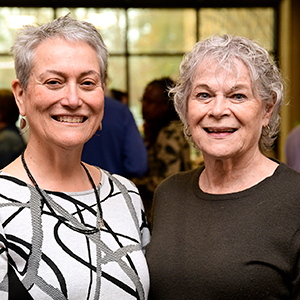The Human Health Exposure Analysis Resource (HHEAR) network launched a webinar series March 1 with a talk by David Balshaw, Ph.D., chief of the NIEHS Exposure, Response, and Technology Branch.
 At NIEHS, Balshaw focuses on the development of emerging technologies that advance innovative approaches to improving exposure and risk assessment. (Photo courtesy of Steve McCaw / NIEHS)
At NIEHS, Balshaw focuses on the development of emerging technologies that advance innovative approaches to improving exposure and risk assessment. (Photo courtesy of Steve McCaw / NIEHS)HHEAR is funded by NIEHS; the National Cancer Institute; the National Heart, Lung, and Blood Institute; and the National Institutes of Health Environmental influences on Child Health Outcomes (ECHO) Program. The initiative, which began in 2019, provides a comprehensive set of resources to researchers seeking to advance knowledge about the exposome. That term refers to the totality of environmental exposures — and their corresponding biological changes — that humans experience throughout life.
“Today, we have 44 approved studies with analysis of some 70,000 samples from over 35,000 individuals, as well as 139 targeted chemical exposures,” said Balshaw. “Twenty-three of the studies are now fully publicly available.”
This data repository is updated as relevant studies become publicly available, allowing researchers to access a wealth of important scientific information. They can use that data to conduct secondary analyses and enhance their own exposome research.
“We really built this to enable harmonization and integration of the disparate studies, even if they use different metrics,” noted Balshaw.
The evolution of the exposome
Balshaw described the history of the exposome and some of the challenges associated with studying it. The term has evolved since being coined in 2005, when the first paper on the topic sought to place the exposome on the same footing as the genome in the biomedical research community’s efforts to understand human health and disease.
“The environment is a massive and ill-defined set of factors,” Balshaw said. “Think of it as everything not encoded by the genes, what is heritable versus what is stochastic [involving random variables]. It is very dynamic,” he added.
“By far, the majority of publications that use the word exposome are using it as a buzzword,” Balshaw said, suggesting the need for more in-depth analysis, which HHEAR can enable. “In my view, there have only been a handful of projects that are powerful examples demonstrating the value of the exposome.”
Precision environmental health
According to Balshaw, there is enormous potential for HHEAR to advance the scientific framework known as precision environmental health. The idea is to incorporate comprehensive exposure research with genetics analysis to gain a more complete picture of an individual’s disease risk.
“Precision environmental health is focused on prevention, whereas precision medicine is focused on disease treatment,” Balshaw explained.
“What really attracts me is seeking a deep level of understanding of the mechanistic underpinnings of exposures and then translating that into individual risk assessment and intervention to decrease the burden of disease,” he said.
Access to HHEAR tools and resources
HHEAR consists of three main components, which include the following.
- Six laboratories in the National Exposure Assessment Laboratory Network (Lab Hubs) provide consultation and laboratory services for analyzing biological and environmental samples associated with human health.
- The Data Repository, Analysis, and Science Center (Data Center) at the Icahn School of Medicine at Mount Sinai maintains a public access repository for data generated by the Lab Hubs, and epidemiologic data provided by HHEAR clients. The Center also provides statistical analysis, data integration, and interpretation services to clients.
- The Coordinating Center, hosted by Westat, links the research community to HHEAR Lab Hubs and the Data Center.
Check out the sidebar for more information on HHEAR resources and how to apply.
The next HHEAR webinar will be held April 12, and registration is available. It will feature University of California at San Diego professor Shankar Subramanyam, Ph.D., and Susan Teitelbaum, Ph.D., head of the Data Center at Mount Sinai. They will focus on the do's and don'ts of data sharing.
(John Yewell is a contract writer for the NIEHS Office of Communications and Public Liaison.)









